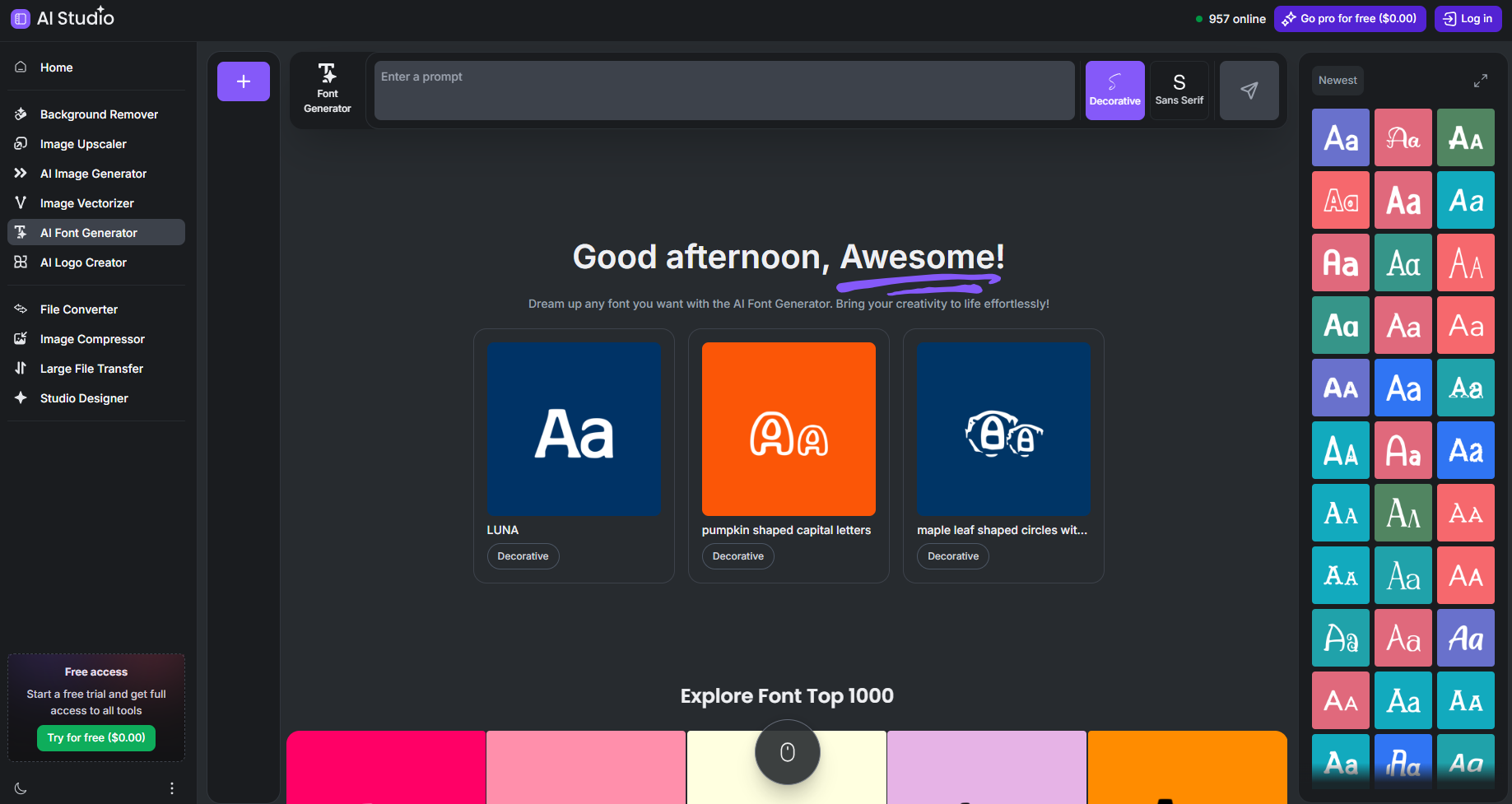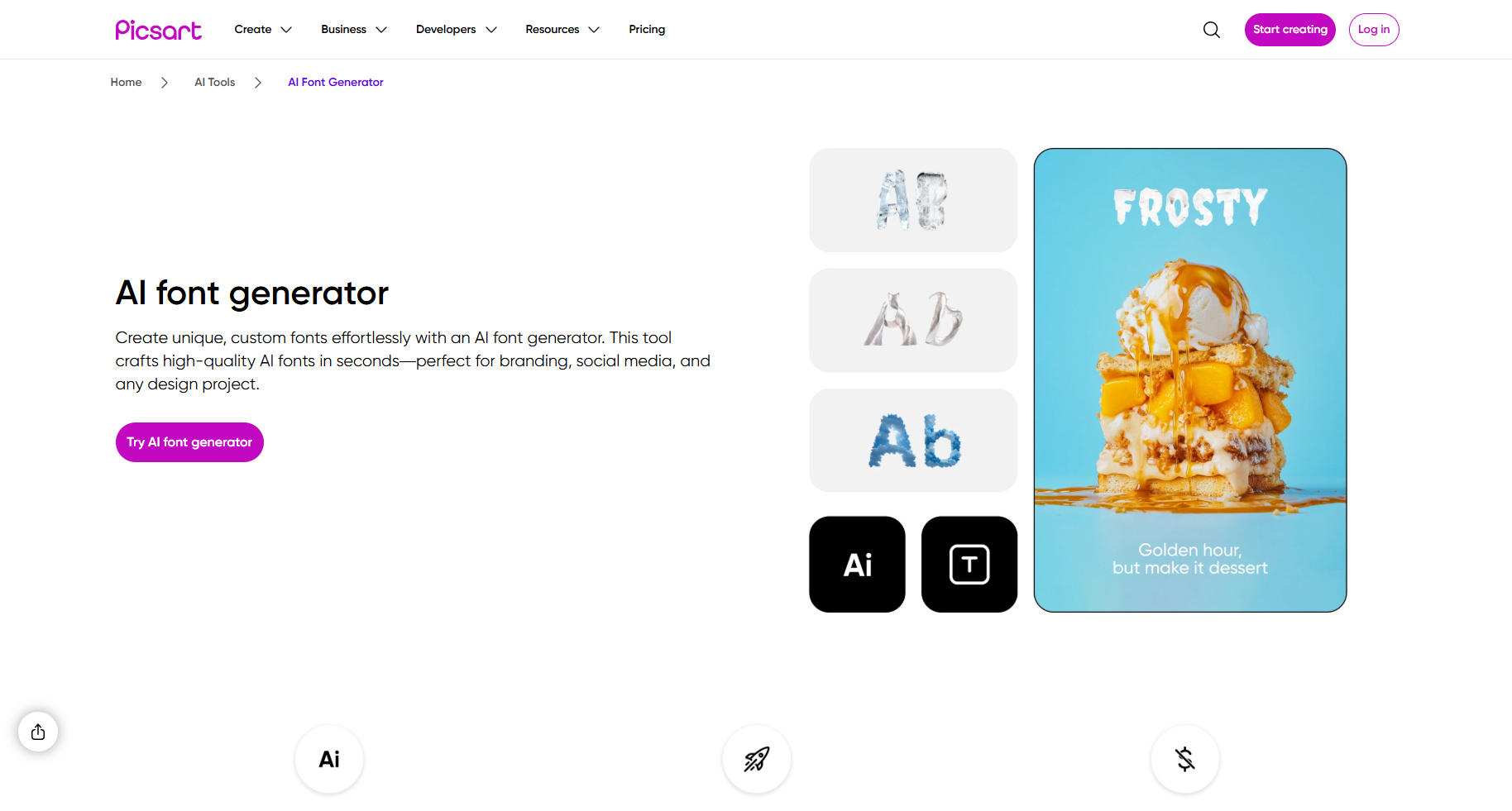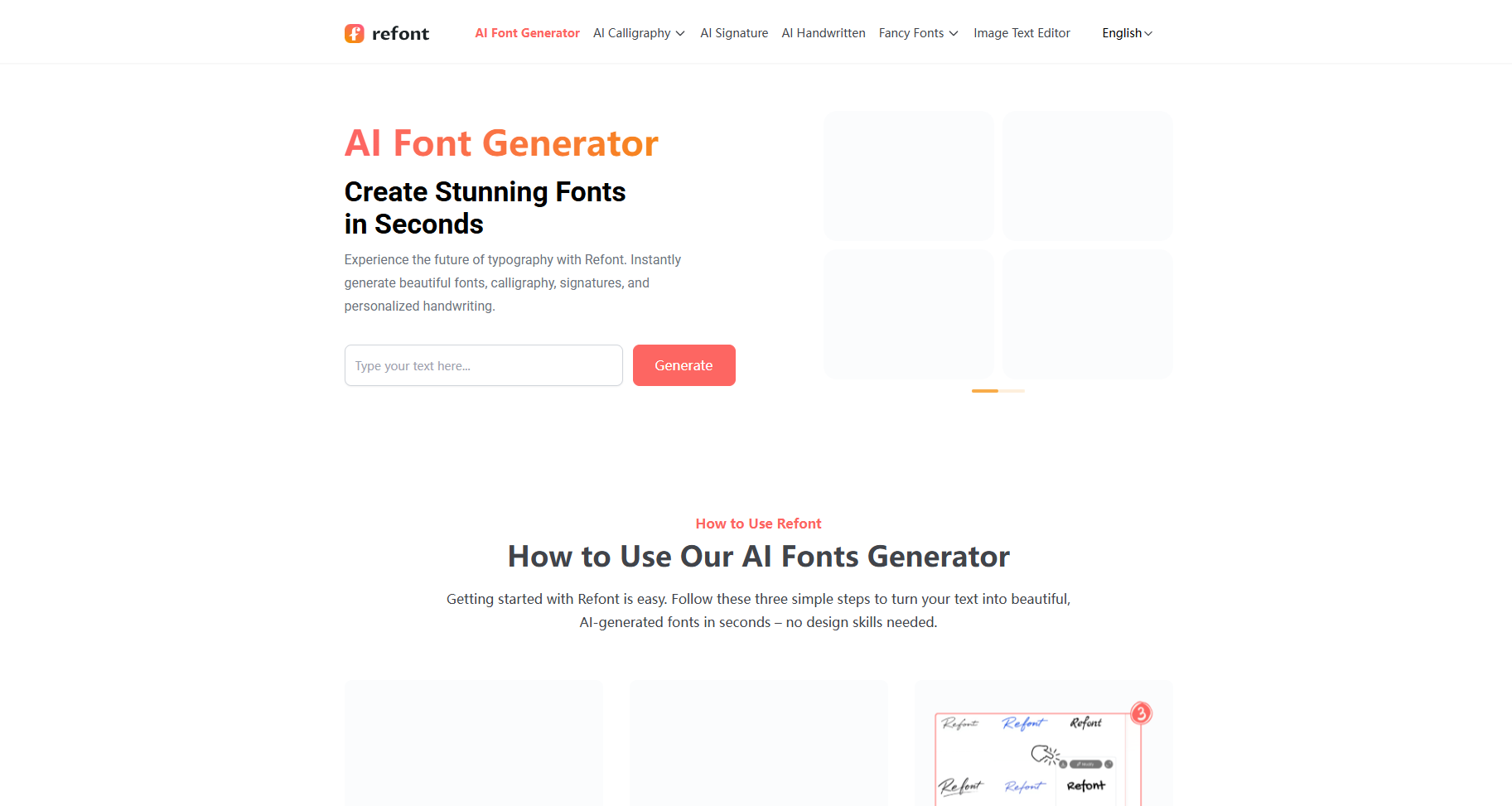Typography is one of those things that can make or break a design. The right font brings personality, grabs attention, and helps your brand stick in people's minds. But if you've ever tried creating a custom typeface from scratch, you know it's brutal. Tweaking curves, wrestling with design software, obsessing over every little detail for hours on end.
Things are changing fast. AI powered font generators are popping up everywhere, and honestly, they're pretty incredible. You can sketch something on paper, snap a photo of your handwriting, or just describe what you want, and these tools turn it into an actual working font. No advanced degree in typography required.
I've tested a bunch of these tools, and here are five that actually deliver. Each one does something a bit different, so depending on what you need, one of these should work perfectly.
How Do AI Font Generators Work?
Think of these as super smart assistants that understand fonts. You give them some visual examples or tell them what style you're after, and they build out a complete alphabet for you. The fancy algorithms handle all the technical stuff like kerning, spacing, and making sure your letters actually look good together.
Some tools let you upload images or sketches and turn them into fonts. Others work with text descriptions where you just tell the AI what kind of vibe you want. There are specialized handwriting converters that capture your personal writing style perfectly. Style transfer engines can take the character from one font and blend it with another. And then you've got the hybrid platforms that combine all these approaches so you can experiment however you want.
1. Creative Fabrica Font Generator

Creative Fabrica is probably my favorite for pure flexibility. The whole platform is designed around giving you complete creative control without making you learn complicated software. You can upload pretty much anything, whether that's a hand drawn sketch, an existing font you like, or even random doodles, and the tool figures out what you're going for.
What I really like is how the algorithms work. They actually study your input and look at things like line thickness, the curves in your letters, and all those little quirks that make a font unique. Then it builds out a complete alphabet that captures that same energy. You're not stuck with what you get either. There are tons of customization controls where you can adjust slant, change the weight to make things bolder or lighter, add decorative touches, or fine tune the spacing between letters.
The interface is surprisingly easy to use considering how powerful it is. Beginners can jump in and start making fonts right away, but there's enough depth that professional designers use it for client work too. They offer free trials for basic generation, which is great because you can actually test it out and see if it fits your workflow before paying anything.
The iteration feature is where this tool really shines. You make a version, preview how it looks in actual text, then go back and change just one element like the curve or slant and regenerate it instantly. This means you can try dozens or even hundreds of variations super quickly until you find exactly what works. It's that rapid feedback loop that makes the creative process so much faster.
2. Calligraphr

If you want to turn your handwriting into a font, Calligraphr is hands down the best tool out there. There's something special about using your own handwriting in designs. It adds warmth and personality that regular fonts just can't match. The whole process is surprisingly simple too.
They give you a template to print out that has boxes for every letter, number, and punctuation mark you can think of. You fill it in with your own writing using whatever pen or marker you like, scan it back in or take a clear photo, and upload it to the platform. The AI analyzes each character, looking at your stroke patterns, pressure variations, all the little imperfections that make handwriting feel real.
What really impressed me is how well it preserves your actual writing style. A lot of handwriting fonts look too perfect and clean, but Calligraphr keeps those natural inconsistencies that make it look authentic. You get full control over how much smoothing to apply too. Want it to look polished? Crank up the smoothing. Want it raw and personal? Keep it minimal.
The export options are solid. You can save your font as TTF or OTF files, which means they work with basically any design software or word processor out there. There are also settings to adjust letter spacing and fix any weird quirks that might pop up. The best part is you can create alternate versions of common letters and the platform will randomly use different versions when you type, making it look way more natural than just repeating the exact same "a" over and over.
3. Vondy

Vondy is where things get really creative and experimental. If you're bored with playing it safe and want to create fonts that nobody's seen before, this is your playground. The whole platform is built around style transfer and mixing different influences together.
Let's say you love the elegance of a classic serif font but also want some of the playful energy from a handwritten style. In Vondy, you can actually blend those together. Upload reference images or use the built in style controls, and the AI figures out how to merge the architectural features from one font with the personality of another. It sounds complicated but the interface makes it pretty intuitive.
The text based controls are really handy too. Instead of uploading images, you can just describe what you want in terms of weight, roundness, and overall mood. Want something bold but friendly? Geometric but warm? You can dial in those parameters and watch the font evolve in real time. Everything happens in the cloud, which means your projects are saved automatically and you can pick up right where you left off from any device.
One feature I use constantly is the compare function. It lets you preview different style combinations side by side, which makes it way easier to make decisions. You can also export samples to share with clients or team members for feedback before committing to a final version. For branding work or any project where you're trying to nail a specific vibe, being able to experiment this freely is huge.
4. Picsart AI Font Generator

Most people know Picsart for photo editing, but their font generator is seriously underrated. The big advantage here is integration. If you're already using Picsart to create social media posts, ads, or any kind of visual content, you can generate custom fonts without ever leaving the platform.
The workflow is straightforward. Upload a sketch or inspiration photo, and the AI interprets the style and proportions to build a font. But unlike standalone font generators, you can immediately use that font in your designs. Want to see how it looks on a Instagram post mockup? Just drag it into your canvas. Testing different backgrounds? Switch them out and see what works.
There are manual controls for everything you'd expect. Adjust character width to make things more condensed or spread out. Tweak alignment and overall spacing until it feels right. They've also built up a solid library of templates and inspirational images to help jump start your creativity when you're stuck.
For marketers, bloggers, and brand managers who need eye catching custom fonts for campaigns, this all in one approach saves so much time. Instead of generating a font in one tool, exporting it, importing it somewhere else, and then using it, you just create and use it all in the same workspace. The learning curve is pretty gentle too, especially if you're already familiar with Picsart's other features.
5. Refont.ai

Refont is all about speed and accuracy. When you're on a tight deadline and need a professional looking custom font fast, this is the tool to reach for. Upload a sketch or image, wait a couple minutes, and you've got a complete, fully functional font ready to use.
What sets Refont apart from competitors is how well it preserves the visual harmony and proportions of your original artwork. A lot of font generators kind of interpret what you gave them, which can lead to results that don't quite match your vision. Refont puts serious emphasis on staying true to your input. If you sketched letters with specific proportions or unique character, those qualities show up in the finished font.
The automation is impressive. Once you upload your sample, the AI automatically creates the entire glyph set, meaning every letter, number, punctuation mark, and special character gets generated. The kerning (spacing between specific letter pairs) and overall spacing are optimized using professional algorithms, so the font actually looks polished and readable right out of the gate.
Export formats are ready for both print and web design, which makes it super versatile. Whether you're working on packaging, a website, business cards, or digital ads, the fonts work everywhere. The main thing to remember is that input quality matters. Before you upload, make sure your sketch is clear and well lit. Better photos mean more precise lines and more faithful replication of your style. But if you nail that part, you can go from concept to finished font in under ten minutes, which is pretty mind blowing.
Picking the Right One
Choosing between these tools really comes down to how you like to work and what your project needs. Think about your preferred input method first. Do you sketch ideas on paper? Work better describing things with words? Want to use your actual handwriting? Different tools excel at different approaches.
Control level matters too. Some designers want deep customization where they can tweak every tiny detail. Others just want quick, good looking results without fussing over parameters for hours. Both approaches are valid, it just depends on your style and timeline.
Make sure whatever platform you choose exports fonts in formats that work with your other tools. Most support the standard TTF and OTF formats, but it's worth checking. And think about the speed versus features tradeoff. Tools focused on rapid results might have fewer customization options. Platforms with tons of features might take longer to master and use. Pick what fits your workflow.
Common Questions
Can I use these fonts for client work?
Usually yes, but licensing varies by platform. Most allow commercial use, especially on paid plans. Free versions sometimes have restrictions, so always check the terms before using fonts in professional projects.
Will my handwriting actually look good as a font?
Calligraphr and Refont.ai do an excellent job capturing your real writing style, including the natural variations that make handwriting feel authentic. Just write normally on the template and the tools handle the rest.
Any free options?
Creative Fabrica offers free trials so you can test the platform. Most tools have some basic features available without paying, which is enough to experiment and see if you like the workflow.
Which one's best for branding work?
Vondy and Refont.ai give you the most control and the widest range of export options, making them ideal for professional branding projects where you need everything to be just right.
Can I share fonts with my team?
Yep, most modern platforms include cloud features and sharing options so you can collaborate easily and get feedback from teammates or clients.